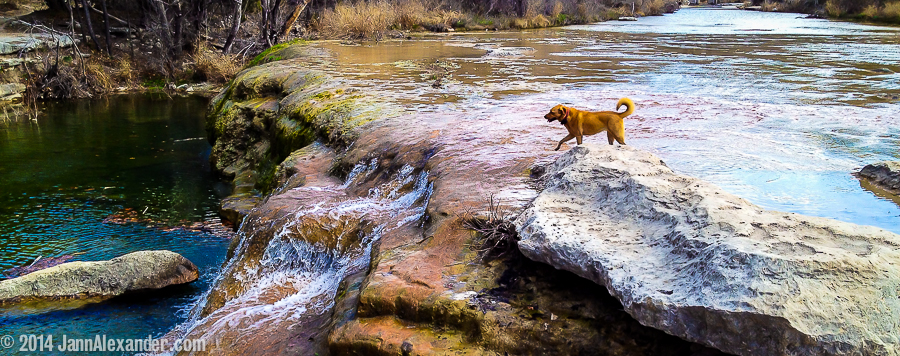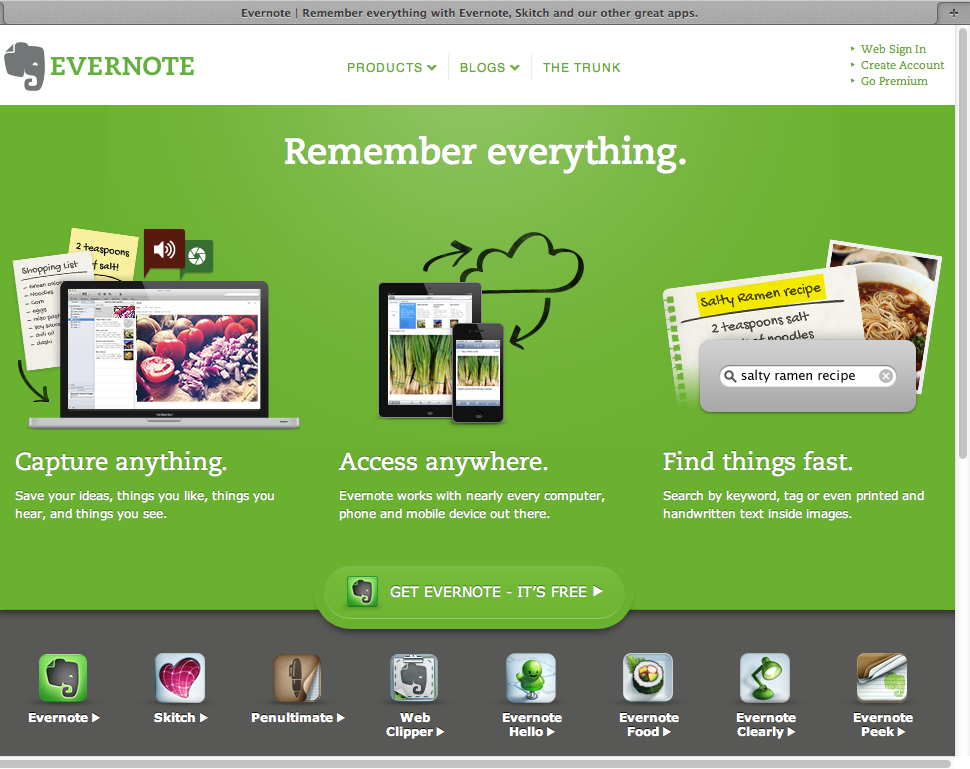Ask Yourself Six Questions to Skyrocket Your Creativity

“It is the function of art to renew our perception. What we are familiar with we cease to see. The writer shakes up the familiar scene, and, as if by magic, we see a new meaning in it.”
―ANAÏS NIN
Creative people—writers, painters, designers, art directors, photographers, poets—all share one gift: We have a finely-honed vision. We can see what others don’t; we can find new meaning in what’s familiar, and we can pull magic from the mundane. But like superheroes with super powers, we have to use our gift with care, nourish it, tend to it and practice it.
We’re not immune to struggling in our journey of magic-making. When we have trouble nailing fresh ideas, or when we hit the inevitable creative bumps, we can ask ourselves these six questions to make the magic flow:
-
How can I find magic in the mundane?
It’s an attitude shift. The first realization you’ll have is that not every moment in life can be magical. Many moments, in fact, couldn’t be further from magical—they’re simply mundane, routine, mind-numbingly repetitive tasks we all must undertake. But is it really true that not every moment can be magical? That depends on your attitude.
Curiosity can shift your attitude to seeing magic in what’s been seemingly mundane. Using your curiosity retrains your eyes to see something you hadn’t seen before, or allows your ears to hear what you’d ignored before, or lets you find sensations you’d never felt before with a touch. In order to change your attitude, you become curious.
“When you add curiosity to your routine, your attitude towards the mundane shifts towards magic.”
-
Am I really absorbing familiar things?
Creative people have lots of tricks to pull ideas out from the familiar things of life. But they all boil down to one concept: absorption. We simply absorb everything. We are unfiltered. We take it all in. It’s a habit you can develop, too. Looking at details, trying to find different meanings, listening for a distant sound that no one else is paying any attention to—spend time like that often enough, and you’ll develop that habit, too.
When we spend time absorbing, listening, looking, hearing, feeling and yes, even smelling, we’re developing our awareness and increasing our ability to absorb things. As Amy Masterman suggests in her blog, Sacred Sensual Living, say yes. It’s that easy: just say yes. When we do, we become creative sponges. Later on comes the sorting out.

Perhaps that’s why most creative professionals work for themselves: to have the freedom to tap the ways they can sort through everything they absorb for the big idea, the big meaning, that they’ll be able to express on canvas, in clay, on their piano keyboards, in film.
Following rigid schedules isn’t something that creatives do much, anyway. Since there are always some imaginative things to absorb, everywhere—in fact, ideas can simply come straight at you when you’re gazing at the web, checking your phone, reading online—there’s often no need to seek them out, as they’re all right there for the taking. Once you get the hang of absorbing.
-
How do I sort out what I’ve gathered?
Here’s where it helps to think of yourself as both gatherer and hunter. Once gathered, ideas can percolate and roam around inside us forever, unless we hunt them down.
There’s no harm in hunting them down by trial and error. Creativity is nothing if not failure repeated enough until some rough little gem begins to dazzle like a diamond. Trying on ideas for size is the only way to sort, select and connect what works. Gathering and absorbing without ever attempting your craft is a guaranteed way to fail, for good. That’s why we all learn, eventually, to try things out. In fact, we improve by trying lots of things out, repeatedly.
As Scott Ginsberg notes in The Mind Is a Terrible Office, “Experience your ideas kinesthetically. Whatever is rising up from within your depths, just get it down . . . Regardless of the medium, the first step in doing anything is to just do that thing. Anything else is procrastination in disguise. Every moment we’re just thinking about something, the idea is actually dying. It’s deprived of the oxygen of documentation. We have to start punching those keys.”
It’s the energy in our kinesthetic act of making/creating/writing/painting/whatever that turns on our flow.
“Regardless of the medium, the first step in doing anything is to just do that thing. Every moment we’re just thinking about something, the idea is actually dying.”
—SCOTT GINSBERG
-
Is finding magic in the familiar a skill I need to practice?
Everything about creativity requires practice. Recognizing the ideas that bubble up is a thing that needs constant honing. Like any skill, it gets better-defined the more ways and the more times we try it. Try thinking of yourself as a juggler, who always has many ideas rummaging around in your subconscious. It takes a bit of skill to juggle all of them without losing them.
When it’s time to pull out the big idea, it can seem like you’re looking for that one little bit of magic in a giant haystack of ideas. And when you look too hard, it’s elusive. That’s why we practice our ideas, again and again.

While you’re practicing absorption, it’s important to keep yourself from being too absorbed. You need a break, you need to step away from your effort and find some energy elsewhere—whether you take your dog to a creek, grab your tennis racket, lay out your yoga mat, start reading a trashy novel or cook a new recipe. You have to live your life, too, and when you return, refreshed, your ideas will still be flowing. Ideas flow from life.
“Everything about creativity requires practice. So does finding magic in the familiar.”
-
How does letting go help me connect the dots?
We’re changing our dance steps, and we’re letting go. We’re no longer gathering, no longer hunting, no longer looking for it nor looking at it. We’re just enjoying our lives. That’s when the magic happens—it can just bubble up unexpectedly, and you find that you’re connecting all of the dots.
Sometimes, what’s as routine as having a conversation with a close friend can pull all of your ideas together into that eureka moment for the right twist to your novel. Or making the same familiar drive to get groceries allows you to notice light cast in a certain way, and you’ll be inspired to move on to the next painting. Finding the details of what’s familiar through your viewfinder can help you focus your vision for your next film. Doing the most familiar things, the ones that are least likely to be demanding because they’re so mundane, can end up being springboards to some entirely new concept to explore and refine.
“To me, all creativity is magic. Ideas start out in the empty void of your head—and they end up as a material thing, like a book you can hold in your hand. That is the magical process.”
—ALAN MOORE
-
What do I do with all of these ideas I’m not using?

An idea is never wasted. That’s why writers and artists like to keep journals. It’s a method of laying claim to everything we see around us, for future use in a new creative undertaking. (Personally, I never want to let an idea get away. I might need it someday.)
You’ll want to save your ideas, too. I promise that once you start generating ideas like crazy, you’ll become attached to them, and you’ll want to mull them over, and feel they’re retrievable some day. You may never use a one of them again; but you’ll feel more satisfied if you just get your idea down somewhere. You can carry a journal or a sketchbook with you to jot down thoughts and to scribble thumbnails, or you can adapt your own technique.
You may even have several places for ideas and methods of recording your ideas. Your 35mm camera, your iPhone voice memo app, numerous sticky notes of many colors, the lists that you handwrite with your fountain pen and even your Evernote app can serve the journaling function.
With all of your potential ideas captured and neatly tucked away, you can sit back and wait for that magic moment when it all becomes clear what the big idea is going to be. ♣
Most of my ideas are here at Pairings, and at JannAlexander.com.
How are you managing your ideas and sorting them out?
Click Here to get your free weekly digest of Popular Pairings and a free poster.




This is an excellent, thoughtful post – I really enjoyed it Jann. Thanks!
Thanks for the feedback. I think you’ve got your mojo working overtime these days, right?
Yes I am a one-woman band – re-doing my portfolio, looking for gallery to carry my art now that I have a body of work done – about 25 new pieces. Phew.
I am on sensory overload!
Would love to see some pieces from that new body of work. Hope you post some. That’s another great point about artists–we are all one woman-bands. Good idea for a post too
I agree an idea is rarely wasted. ANd if the idea is meaningful enough, it will haunt a person, tease one’s consciousness until the idea is fully expressed. Some of my blog posts are long simmering ideas, impressions that just wouldn’t go away!
A good thing. 🙂
Hey Jean, I love that concept of simmering ideas and lingering impressions. Thanks for visiting and commenting. Happy simmering.
I love the concept – finding magic in the mundane. It resonates with mine about finding joy in daily life. An inspiring piece.
And some days we need some inspiration, though our creative impulses may never be far away. Finding what’s magical in the most mundane things is one of my favorite coping strategies. Thanks for visiting and commenting, Kate. Joy to you!
Excellent post! I’ve found it helpful when I get an idea without the time to do anything more with it, I just start a new post using the idea as the title and then save it. When i go to my blog page I have several “titles” waiting to be fleshed out or discarded.
I love how you explain creativity as the process of just being more aware – of seeing things within things. I thought I was just nuts. 🙂
I employ a similar strategy for my post ideas–my dashboard is so full of them, I’ve nicknamed them Drafts in the Dashboard! Even audio clips I dictate to myself find their way their. When inspiration strikes, we must channel it no matter where we are.
Thank you for visiting and for your feedback about the awareness process. It seems like a thing that creatives share, and others are mystified by. Aren’t we lucky?